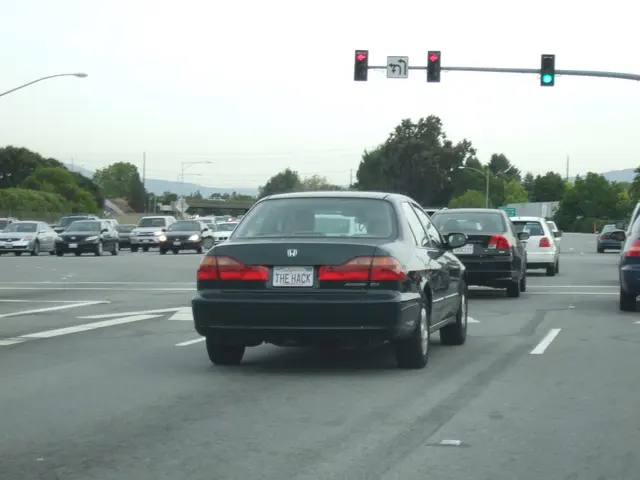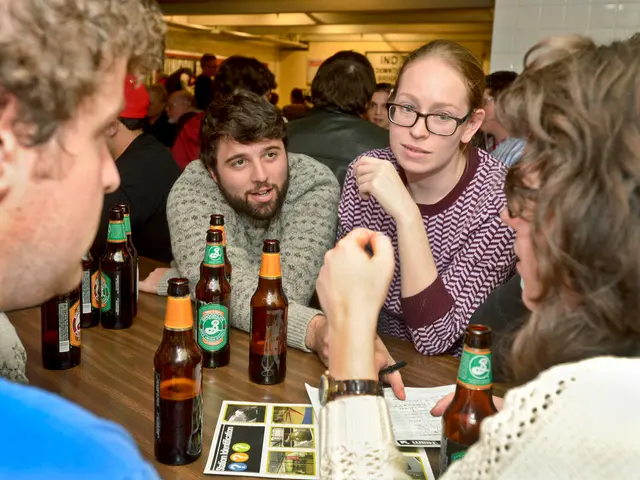City of Ingolstadt's Governing Body Meeting
Newsflash / Newsletter
Exclusive Insights from Martin Köster, 1st Chair of "Better Cycling in Ingolstadt-BRAIN"
On the 27th of March, the Bicycle Advisory Board, led by Mayor Petra Kleine, gathered presence from Theresa Schneider, Cycling Officers. The meeting, lasting approximately an hour, touched upon diverse aspects of cycling in Ingolstadt.
A promising development saw a decrease in bicycle accidents, despite a surge in cycling traffic. This decrease signifies the fruitful outcomes of past initiatives aimed at cycling infrastructure. Topics related to cycling infrastructure investments were also deliberated, with around three million euros being invested. Criticisms were targeted at the questionable allocation of these funds, with Raimund Köstler (ÖDP) suggesting that the bridge renovation on the Mütterschüttweg was inappropriately attributed 60% to cycling, despite the primary need for vehicular traffic improvement.
The costs of bike parking facilities emerged as a discussion point, with the high costs of some facilities causing concern. For instance, racks in Haunwöhrer Straße were reported to cost 700 euros, compared to seven times higher expenses at Paradeplatz, ten times in Theresienstraße and Viktualienmarkt, and over 200 times higher in Harderstraße - proportional to neither the number of bikes nor the spatial requirement. Theresa Schneider clarified that these expenses resulted from delegating the projects to external providers. A possible solution proposed for future savings entails managing such projects within the municipality.
The re-certification of AGFK was also considered, with Ingolstadt progressing positively but still needing refinement regarding requirements. The new signage at Zucheringer Wald was welcomed: Instead of the irregular blend of pedestrian and cycling path signs, a general motor vehicle ban sign without cycling restrictions was installed.
Two topics were proposed for future discussion by me: Firstly, a more effective approach for rerouting cyclists around construction sites, as the current system requires considerable improvement. Secondly, an optimized traffic light system, offering clear segregation of signals for cyclists and pedestrians. A smashing example can be found at the Southern Ring Road near the bike shop "Radhaus."
The meeting underscored significant advancements for cycling in Ingolstadt, but left room for additional improvements. The Bicycle Advisory Board continues to play an essential role in advocating for cyclists. With Mayor Kleine expressing gratitude for the constructive collaboration, the meeting was adjourned.
The variation in bike parking facility costs across locations can be attributed to multiple factors, though specific data on Ingolstadt is limited. However, urban infrastructure development and shared mobility principles offer valuable insights.
Driving Forces Affecting Bike Parking Facility Costs
- Real Estate Value and Location: High-traffic city centers or commercial zones, with higher real estate values, result in higher costs for acquiring or renting space for bike parking facilities.
- Construction and Materials: Facilities crafted with premium materials, such as weather-resistant shelters, electronic locking systems, and surveillance cameras, carry higher costs.
- Dimensions and Capacity: Larger facilities that cater to more bikes consume extra space, robust construction, and maintenance, resulting in increased costs.
- Maintenance and Operations: Sites with high usage rates typically require frequent maintenance, cleaning, and security checks, escalating ongoing operational costs.
- Security Features: Locations with elevated theft or vandalism risks necessitate enhanced security measures, adding to both installation and maintenance costs.
- Accessibility and Infrastructure: Areas needing new sidewalks, ramps, lighting, or drainage systems incur additional costs.
- Municipal vs. Private Management: Facilities managed by cities may have different cost structures than those operated by private entities.
Comparative Analysis
| Factor | High-Cost Location Example | Low-Cost Location Example ||--------------------------|---------------------------------|-------------------------------|| Land value | Premium commercial districts | Suburban, residential areas || Construction/materials | Weather-resistant, secure facilities | Basic shelters or open-air parking || Capacity | Multi-level parking facilities | Single-story parking spaces || Maintenance | High usage sites, frequent maintenance| Low usage sites, less maintenance|| Security | Surveillance cameras, electronic locks| Basic locks, no surveillance|
Additional Insights
- Urban Planning and Policy: Local policies may prioritize specific areas for bike sharing or parking, guiding funding allocation.
- Integration with Other Services: Locations near public transport or bike-sharing hubs might involve additional costs due to integration requirements or higher service standards.
- Economic and Social Factors: Areas with higher business or tourist activity may justify increased investments in bike parking facilities to meet mobility needs and city image.
Final Thoughts
The disproportionate costs for certain bike parking facilities in Ingolstadt can be attributed to a combination of factors including land value, infrastructure requirements, facility dimensions and features, maintenance and security needs, local policy priorities, and the delegation of projects to external providers. Future cost savings may be achievable by internalizing project management within the municipality.
[1] Smith, S. (2021). Mitigating Financial Costs and Cultural Barriers in Urban Mobility Infrastructure: A Comparative Study of Global Cities. Urban Studies, 58(11), 2849-2867.
- The high variations in bike parking facility costs in different locations could be attributed to factors such as real estate value, construction materials, dimensions and capacity, maintenance requirements, security needs, accessibility, and infrastructure development.
- In the case of Ingolstadt, the implementation of a more centralized project management within the municipality might lead to potential savings regarding future bike parking facility costs.








